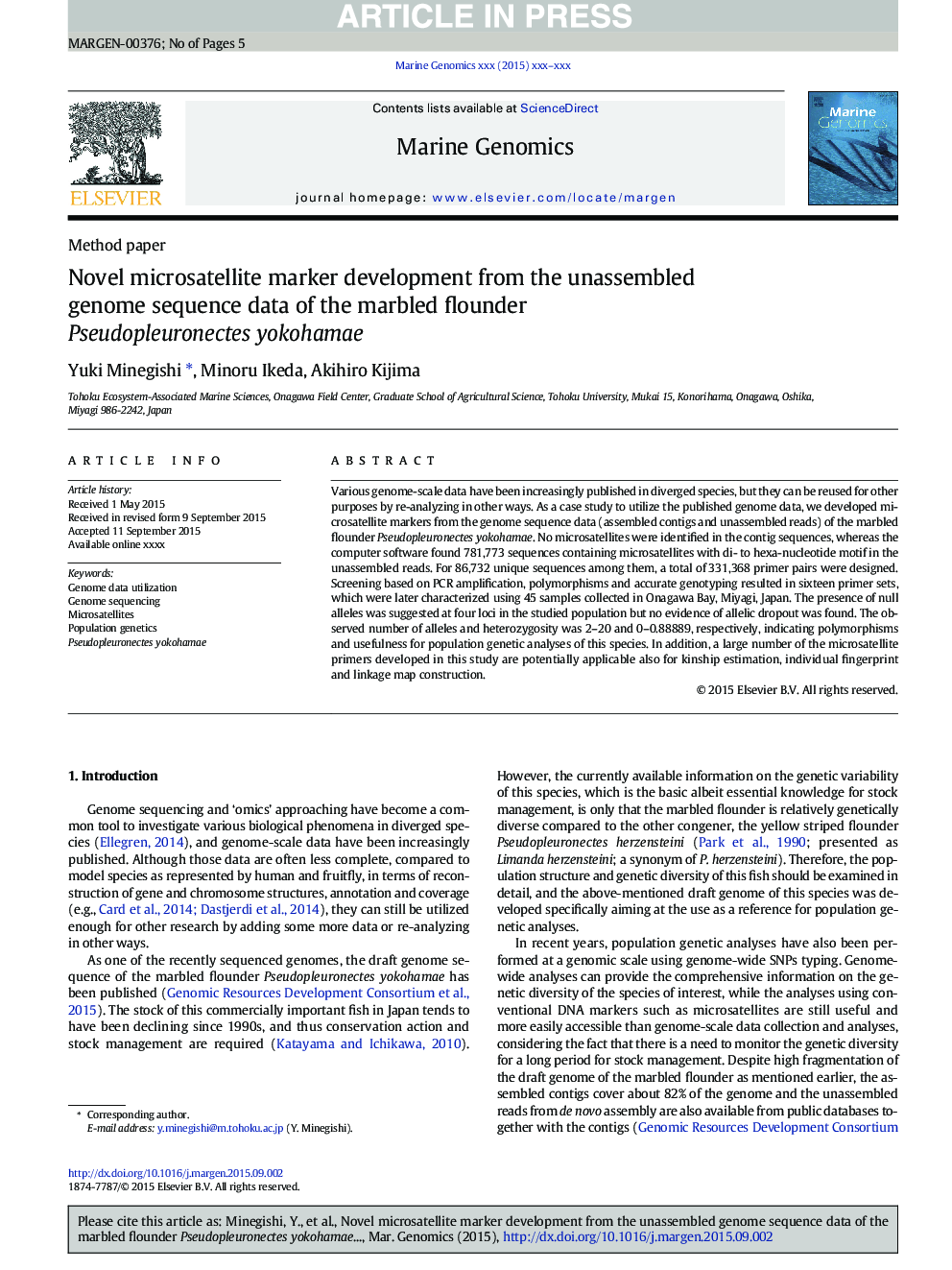| Article ID | Journal | Published Year | Pages | File Type |
|---|---|---|---|---|
| 10877928 | Marine Genomics | 2015 | 5 Pages |
Abstract
Various genome-scale data have been increasingly published in diverged species, but they can be reused for other purposes by re-analyzing in other ways. As a case study to utilize the published genome data, we developed microsatellite markers from the genome sequence data (assembled contigs and unassembled reads) of the marbled flounder Pseudopleuronectes yokohamae. No microsatellites were identified in the contig sequences, whereas the computer software found 781,773 sequences containing microsatellites with di- to hexa-nucleotide motif in the unassembled reads. For 86,732 unique sequences among them, a total of 331,368 primer pairs were designed. Screening based on PCR amplification, polymorphisms and accurate genotyping resulted in sixteen primer sets, which were later characterized using 45 samples collected in Onagawa Bay, Miyagi, Japan. The presence of null alleles was suggested at four loci in the studied population but no evidence of allelic dropout was found. The observed number of alleles and heterozygosity was 2-20 and 0-0.88889, respectively, indicating polymorphisms and usefulness for population genetic analyses of this species. In addition, a large number of the microsatellite primers developed in this study are potentially applicable also for kinship estimation, individual fingerprint and linkage map construction.
Related Topics
Physical Sciences and Engineering
Earth and Planetary Sciences
Earth and Planetary Sciences (General)
Authors
Yuki Minegishi, Minoru Ikeda, Akihiro Kijima,
